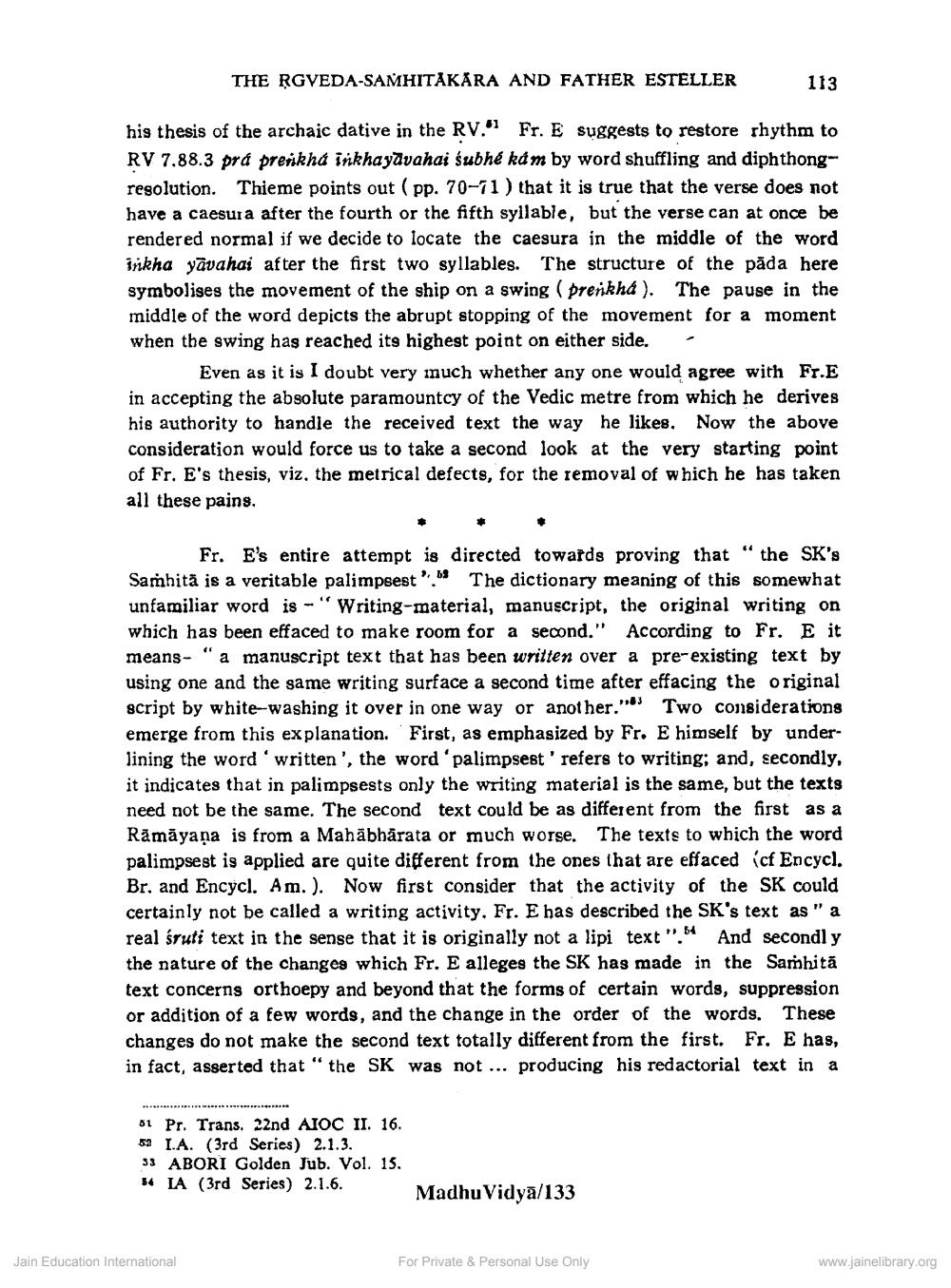________________
THE RGVEDA-SAMHITÄKÄRA AND FATHER ESTELLER
113
his thesis of the archaic dative in the RV." Fr. E suggests to restore rhythm to RV 7.88.3 prá prerkha inkhayāvahai śubhé kám by word shuffling and diphthongresolution. Thieme points out (pp. 70-71 ) that it is true that the verse does not have a caesura after the fourth or the fifth syllable, but the verse can at once be rendered normal if we decide to locate the caesura in the middle of the word irkha yāvanai after the first two syllables. The structure of the pāda here symbolises the movement of the ship on a swing (prenkha). The pause in the middle of the word depicts the abrupt stopping of the movement for a moment when the swing has reached its highest point on either side. -
Even as it is I doubt very inuch whether any one would agree with Fr.E in accepting the absolute paramountcy of the Vedic metre from which he derives his authority to handle the received text the way he likes. Now the above consideration would force us to take a second look at the very starting point of Fr. E's thesis, viz, the metrical defects, for the removal of which he has taken all these pains.
Fr. E's entire attempt is directed towards proving that “the SK's Samhitä is a veritable palimpsest'. The dictionary meaning of this somewhat unfamiliar word is -" Writing-material, manuscript, the original writing on which has been effaced to make room for a second." According to Fr. E it means- "a manuscript text that has been written over a pre-existing text by using one and the same writing surface a second time after effacing the original script by white-washing it over in one way or another."* Two considerations emerge from this explanation. First, as emphasized by Fr. E himself by underlining the word 'written', the word 'palimpsest' refers to writing; and, secondly, it indicates that in palimpsests only the writing material is the same, but the texts need not be the same. The second text could be as different from the first as a Rāmāyaṇa is from a Mahābhārata or much worse. The texts to which the word palimpsest is applied are quite different from the ones that are effaced (cf Encycl. Br, and Encycl. Am.). Now first consider that the activity of the SK could certainly not be called a writing activity, Fr. E has described the SK's text as "a real śruti text in the sense that it is originally not a lipi text". And secondl y the nature of the changes which Fr. E alleges the SK has made in the Samhitā text concerns orthoepy and beyond that the forms of certain words, suppression or addition of a few words, and the change in the order of the words. These changes do not make the second text totally different from the first. Fr. E has, in fact, asserted that "the SK was not ... producing his redactorial text in a
81 Pr. Trans. 22nd AIOC II. 16. 52 I.A. (3rd Series) 2.1.3. 33 ABORI Golden Jub. Vol. 15. 54 IA (3rd Series) 2.1.6.
Madhu Vidyā/133
Jain Education International
For Private & Personal Use Only
www.jainelibrary.org




